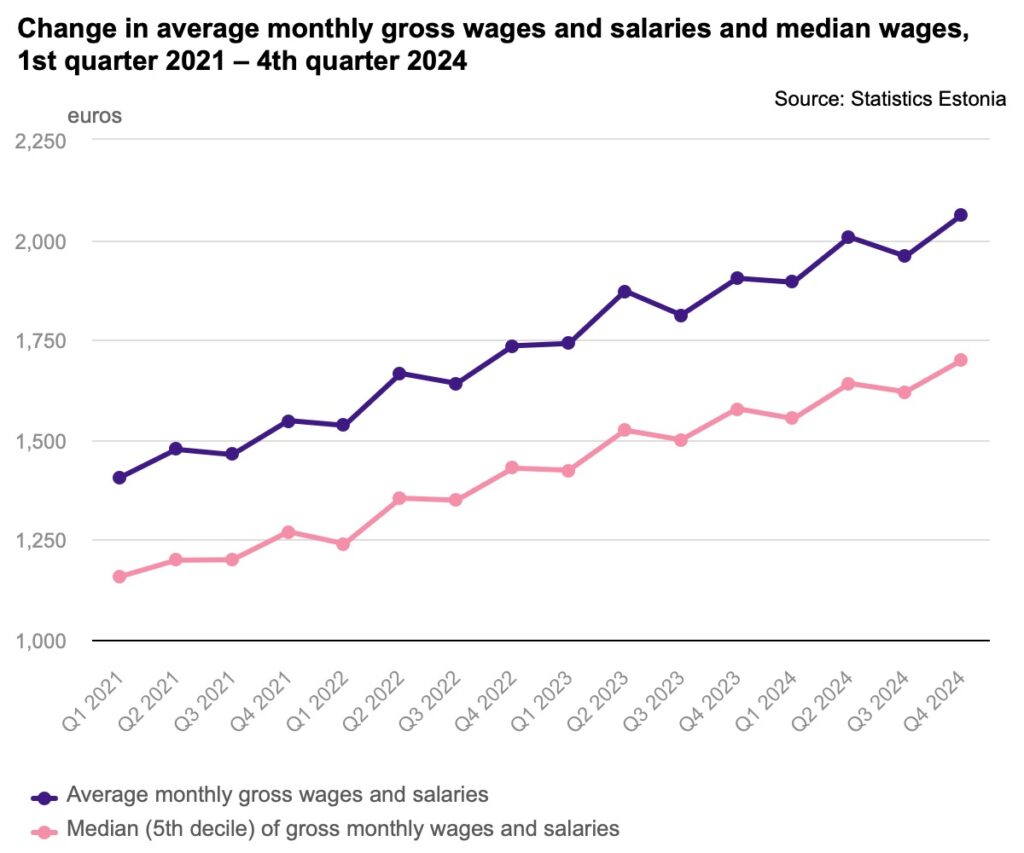Estonia’s median monthly wage rose to €1,628 in 2024, marking an 8.5 per cent increase from €1,501 in 2023.
The average monthly gross wage in Estonia reached €1,981 in 2024, up 8.1 per cent from the previous year. In the fourth quarter, average monthly earnings rose to €2,062 — an annual increase of 8.3 per cent.
The median gross wage marks the midpoint of earnings, with half of employees earning less and half earning more. While both average and median wages have continued to rise in recent years, the pace of wage growth slowed in 2024.
The average monthly gross wages in 2024 were the highest in Tallinn (€2,325) and in Harju (€2,218) and Tartu (€1,995) counties.
“Compared with 2023, the biggest increase in wages and salaries was seen in Hiiu (9.9%) and Ida-Viru (9.7%) counties. Wages and salaries rose by more than 6.5% in all Estonian counties,” Sigrid Saagpakk, an analyst at Statistics Estonia, the country’s official statistic agency, said.

People in accommodation earn the least
The highest average wages and salaries in 2024 were found in information and communication, at €3,484. “This was followed by financial and insurance activities (€3,127) and electricity, gas, steam and air conditioning supply (€2,697),” Saagpakk noted.
The lowest average wages in 2024 were recorded in accommodation and food service activities, at €1,264. The fastest wage growth was seen in human health and social work activities, where pay rose by 11.9 per cent, followed by other service activities with a 9.8 per cent increase.
In 2024, manufacturing employed the largest share of the workforce in Estonia, with 101,400 people — 17 per cent of all employed. This was followed by wholesale and retail trade, including motor vehicle repair, with nearly 90,000 employees, education with almost 65,000, and human health and social work activities with close to 48,000.

